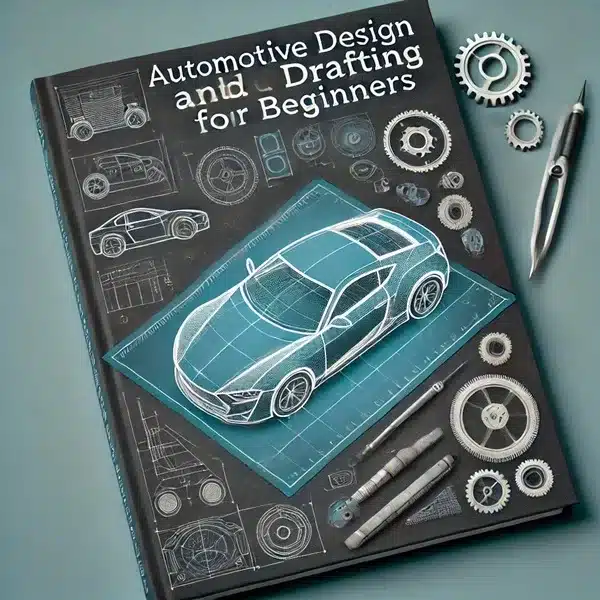The automotive industry thrives on innovation, precision, and creativity. Whether you’re an aspiring automotive engineer or a design enthusiast, understanding the fundamentals of automotive design and drafting is essential. This guide provides a comprehensive introduction to get you started with Automotive Design Tutorial and Automotive Drafting Tutorial methods, ensuring a smooth learning curve for beginners.
What is Automotive Design and Drafting?
Automotive design focuses on creating the aesthetic and functional elements of vehicles, while drafting involves producing detailed technical drawings and plans to bring designs to life. Together, they form the backbone of vehicle development, ensuring every component meets industry standards.
Key Elements of Automotive Design
- Sketching and Conceptualization
Begin with freehand sketches to visualize ideas. Tools like Adobe Illustrator or AutoCAD are excellent for refining initial concepts. - 3D Modeling
Utilize software like SolidWorks or CATIA to create precise 3D models. These models help visualize the vehicle’s structure and appearance in detail. - Aerodynamics
Design for reduced air resistance by considering shapes, curves, and angles that enhance fuel efficiency and performance. - Materials and Sustainability
Choose lightweight yet durable materials, such as aluminum and carbon fiber, for better performance and environmental impact.
Automotive Drafting Basics
- Technical Drawings
Learn to create detailed blueprints for vehicle parts, including dimensions, tolerances, and specifications. - Standards and Regulations
Familiarize yourself with ISO and ASME standards to ensure compliance with industry requirements. - Drafting Software
Popular options include AutoCAD, Siemens NX, and Creo for creating 2D and 3D drafts. - Assembly Diagrams
Drafting isn’t complete without clear assembly diagrams showcasing how individual parts come together to form a functional vehicle.
Steps to Get Started with Automotive Design and Drafting
- Learn the Tools
Start with beginner-friendly software like Fusion 360 or SketchUp before progressing to advanced tools. - Understand Vehicle Anatomy
Study the basics of engines, chassis, suspension systems, and more. - Practice Regularly
Create designs for simple components like wheels or chassis to hone your skills. - Seek Feedback
Share your designs with experienced professionals or online communities for constructive criticism.
Benefits of Learning Automotive Design and Drafting
- Enhances creativity and problem-solving skills.
- Opens career opportunities in the automotive and engineering industries.
- Provides a deeper understanding of vehicle manufacturing processes.
Tools and Resources for Beginners
- Software: AutoCAD, SolidWorks, Blender.
- Courses: Online platforms like Coursera and Udemy offer specialized courses in automotive design and drafting.
- Books: Automotive Design Techniques by Julian Edgar and similar titles.
1. What is the best software for beginners in automotive design?
AutoCAD and Fusion 360 are excellent choices for beginners due to their user-friendly interfaces and robust features.
2. How long does it take to learn automotive drafting?
Learning the basics can take 3–6 months, depending on your dedication and practice. Advanced proficiency may require additional years of experience.
3. Is a degree necessary to become an automotive designer?
While a degree in engineering or design is beneficial, many professionals succeed by leveraging online tutorials and self-learning.
4. What is the difference between 2D drafting and 3D modeling?
2D drafting involves creating flat, two-dimensional representations, while 3D modeling visualizes components in three dimensions, offering more detail and accuracy.
5. Can I pursue automotive design as a hobby?
Absolutely! Many enthusiasts explore automotive design and drafting as a creative outlet, designing custom vehicles or modifications.
